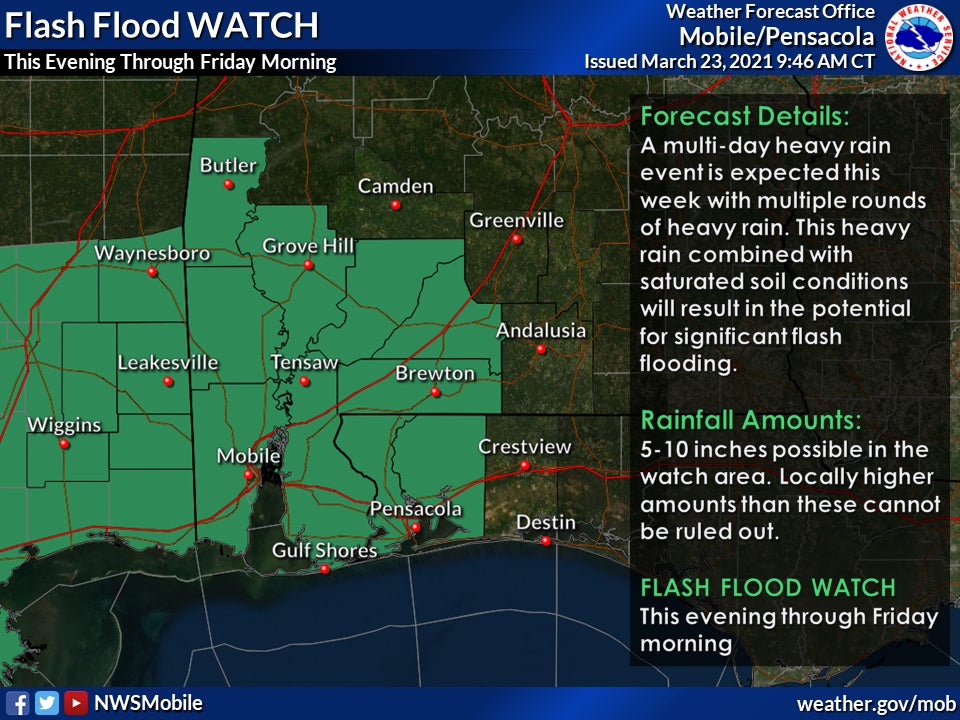County passes resolution to levy education taxes
Published 1:05 pm Wednesday, April 16, 2003
By By ROBERT BLANKENSHIP – Managing Editor
Several county officials met Tuesday for a meeting with Alabama State Toxicologist Neil Sass regarding the mercury content in Alabama and Escambia County fish.
The Alabama Department of Public Health (ADPH) issued a warning earlier in the year to avoid certain fish that may be caught in several local rivers due to mercury contamination.
Sass said that mercury is especially dangerous for women in their child-bearing years and children. He said most others would not be harmed due to the low intake of the fish caught in these waterways.
Local creeks tested that resulted in an advisory were: Big Escambia Creek, Blackwater Creek and Little Escambia Creek. Each was found to have fish with excessive mercury content.
Sass said mercury is much like lead. He said the negative effects are only possible through long-term exposure. He said those that consume a lot of mercury could go blind and that children could suffer from behavior disorders and be slow to learn.
He also said that once mercury was in the body there is little that can be done.
The tests are the first to be conducted on these bodies of water and Sass said it is most likely that the mercury content has always been there. He said mercury is a naturally-occurring substance that can be produced through rocks and rotting trees - a reason for the high mercury content in swamp waters.
Locally, largemouth bass found in Big Escambia Creek was found to contain levels of mercury in excess of Food and Drug Administration (FDA) guidance levels of 1.0 part per million.
The Blackwater River was placed under the advisory due to the presence of methylmercury in the largemouth bass sampled.
The Conecuh River was placed on the the list due to the presence of mercury in excess of FDA guidelines. The ADPH recommends that individuals consume no largemouth bass from the river.
Little Escambia Creek was also found to have mercury in excess of FDA guidance levels. The ADPH recommends that individuals consume no largemouth bass from the creek.
Also put on the list was the Middle River in Mobile County due to high levels of mercury.
The Alabama Department of Environmental Management (ADEM) collected fish from various water bodies throughout the state during the fall of 2002. The fish collected are representative of those species found in an a specific body of water and are those most likely caught by Alabama fisherman.
The fish were analyzed for 21 different materials including contaminants in the water, pesticides and their breakdown products and congeners and heavy metals to which fish may have been exposed. Fish were also examined for body appearance, lipid content, age and weight. After an analysis of these results, the health department made a determination of the possible risk to which individuals might be exposed after consuming fish that contained any of these potentially harmful materials.
On Big Escambia Creek, The ADPH said the contaminated fish were found at the Louisville and Nashville Railroad Bridge Crossing. The Blackwater was tested between the Cty. Rd. 4 bridge and the railroad bridge crossing southeast of Robertsdale.
Fish in the Conecuh River was tested at Pollard Landing, approximately 8.6 miles downstream of the paper mill. Little Escambia Creek was tested at the U.S. Hwy. 31/29 bridge.
Brewton Fire Chief Lawrence Weaver and several others expressed to Sass that they would like to see Murder Creek and Burnt Corn Creek tested. Sass said that he would put both on his list. He said it may be possible to test those waters when ADPH retests the others later in the year. They ADPH will retest the other waters to assure that last year's results were accurate.
Sass said that people can be tested for mercury, but added that it did not make sense to go through those tests.
Sass said that people should be aware of the areas that have been listed under advisories. He said that while consuming some levels of mercury is natural, minimizing the intake is important.




